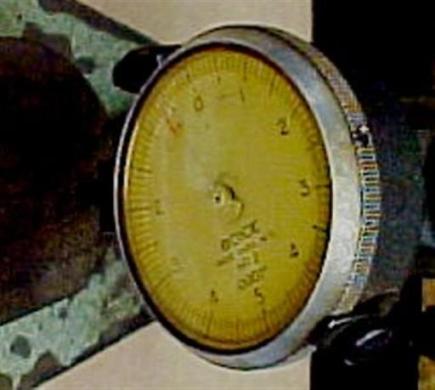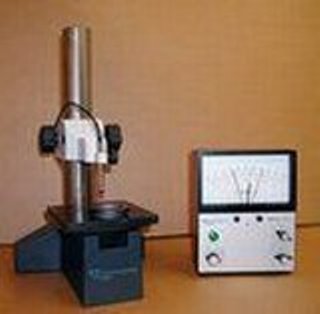Hi Clint,
Yep...I think we are saying the same thing. I think I was just too brief.
In a flatness uniformity test (as I WAG'd) a part is placed on the flat, round base of this device. Then the measuring gauge is raised/lowered over the part until the "needle" of the gauge just makes contact with the parting being tested. The gauge is then "zero'd". Then the part is moved around on the base under the needle which is spring-loaded. As high and low spots on the test part are discovered by moving the part around, the gauge dial will read "positive" and negative...indicating which portions of the test part are low and which portions of the test part are high. If the test part were truly and uniformly flat, the gauge dial would continue to only read "zero" across its entire surface.
Here is a close up of the gauge on your rig :

The new test stuff is non-contact based with lasers used for measurements and the base (along with the test part) is moved by computer/robotics controls.
Here is a newer version :
